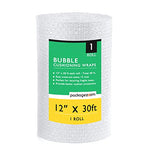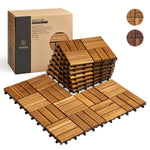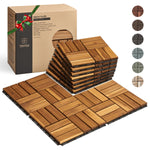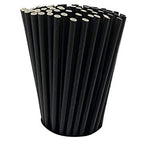You have no items in your shopping cart.
In the realm of horticulture and agriculture, the advancement of technology has revolutionized the way we cultivate plants. One such innovation is the polycarbonate greenhouse, a modern solution designed to provide an ideal environment for optimal plant growth. This article explores the benefits, construction, and maintenance of polycarbonate greenhouses, offering valuable insights for both hobbyists and commercial growers.
Polycarbonate Greenhouse: A Haven for Plants
Plants thrive when they receive the perfect balance of sunlight, warmth, and protection from harsh weather conditions. A polycarbonate greenhouse offers precisely that, creating an environment that fosters healthy growth and high yield. Let's delve deeper into the unique features that make polycarbonate greenhouses a haven for plants.
Maximum Sunlight Exposure
Sunlight is the lifeblood of plants, fueling the process of photosynthesis. Polycarbonate greenhouses are built with translucent polycarbonate panels that allow ample sunlight to penetrate while minimizing harmful UV rays. The panels have excellent light transmission properties, providing plants with the necessary energy for photosynthesis and promoting vigorous growth.
Optimal Temperature Regulation
Maintaining a stable temperature is crucial for plant health and productivity. Polycarbonate greenhouses offer superior insulation properties, trapping heat during colder months and preventing excessive heat buildup in warmer seasons. This regulation of temperature creates a favorable microclimate, ensuring that plants can thrive in a controlled and comfortable environment.
Durability and Strength
Polycarbonate is a sturdy material that can withstand various environmental challenges. Unlike traditional glass, it is highly impact-resistant, making polycarbonate greenhouses less prone to damage from hailstorms, strong winds, or accidental impacts. This durability ensures the longevity of the greenhouse structure, providing growers with a reliable and long-lasting solution.
UV Protection
Sunlight is essential, but excessive UV exposure can be detrimental to plants. Polycarbonate panels are designed to filter harmful UV rays, protecting plants from sunburn and reducing the risk of diseases caused by excessive radiation. This protective barrier shields plants, allowing them to grow without the negative effects of intense sunlight.
Energy Efficiency
In an era where sustainability is of utmost importance, energy-efficient solutions are highly sought after. Polycarbonate greenhouses offer exceptional energy efficiency by reducing heat loss through the walls and retaining warmth effectively. This efficiency not only benefits the environment but also translates into cost savings for growers, making polycarbonate greenhouses a wise investment.
Construction of Polycarbonate Greenhouses
Building a polycarbonate greenhouse requires careful planning and attention to detail. Here, we outline the key steps involved in constructing a sturdy and functional polycarbonate greenhouse.
Site Selection and Preparation
Before embarking on the construction process, selecting an appropriate site for your greenhouse is crucial. Consider factors such as sunlight exposure, accessibility, and protection from strong winds. Once you have chosen a suitable location, prepare the site by leveling the ground and ensuring proper drainage to prevent waterlogging.
Foundation and Frame Assembly
A solid foundation is essential for the stability and durability of your polycarbonate greenhouse. Construct a robust base using materials like concrete or treated wood, ensuring it is level and well-anchored. Next, assemble the greenhouse frame, which can be made of aluminum or galvanized steel. Follow the manufacturer's instructions carefully, ensuring accurate measurements and secure connections.
Polycarbonate Panel Installation
Now comes the exciting part—installing the polycarbonate panels that form the walls and roof of the greenhouse. Begin by attaching the panels to the frame using compatible sealing systems, such as polycarbonate profiles or aluminum capping. Take care to leave adequate room for expansion and contraction due to temperature changes. Secure the panels tightly but avoid overtightening, as this can cause stress and potential damage.
Ventilation and Insulation
To maintain proper airflow and temperature regulation, consider incorporating ventilation systems in your polycarbonate greenhouse. Install vents or fans that can be operated manually or automatically, allowing for effective air exchange and preventing heat buildup. Additionally, insulate the greenhouse to reduce heat loss during colder months. This can be achieved by using insulated glazing or adding a layer of thermal film to the polycarbonate panels.
Irrigation and Shading
To ensure adequate hydration, implement an efficient irrigation system in your greenhouse. This can include drip irrigation, misting systems, or automated watering devices. Additionally, consider installing shade cloth or shading systems to protect plants from excessive sunlight during the hottest hours of the day. This will help maintain a favorable temperature and prevent plant stress.
FAQs about Polycarbonate Greenhouses
1. How long do polycarbonate greenhouses last?
Polycarbonate greenhouses are known for their durability and can last for decades with proper maintenance. The lifespan may vary depending on factors such as the quality of the materials, climate conditions, and regular upkeep.
2. Can polycarbonate greenhouses withstand hailstorms?
Yes, polycarbonate panels are highly impact-resistant and can withstand hailstorms better than traditional glass. However, it is recommended to choose thicker panels or install hail guards for added protection.
3. Do polycarbonate greenhouses require special cleaning?
Regular cleaning is necessary to maintain the clarity and light transmission of polycarbonate panels. Avoid using abrasive materials that can scratch the surface and opt for mild detergents or specialized cleaners designed for polycarbonate.
4. Are polycarbonate greenhouses suitable for year-round cultivation?
Yes, polycarbonate greenhouses offer excellent insulation properties, making them suitable for year-round cultivation. With proper climate control and ventilation, growers can create an optimal environment for plants in all seasons.
5. Can I install a polycarbonate greenhouse myself?
While it is possible to install a polycarbonate greenhouse as a DIY project, it requires careful planning, accurate measurements, and basic construction skills. It is recommended to consult the manufacturer's instructions or seek professional assistance for a successful installation.
6. Are polycarbonate greenhouses more expensive than glass greenhouses?
Polycarbonate greenhouses are generally more cost-effective than glass greenhouses. Although the upfront cost may be slightly higher, the long-term energy efficiency, durability, and reduced maintenance expenses make them a more economical choice.
Conclusion
The polycarbonate greenhouse offers a modern and efficient solution for cultivating plants with optimal care. Its ability to maximize sunlight exposure, regulate temperature, and protect against harsh elements makes it an excellent choice for both hobbyists and commercial growers. With careful construction and proper maintenance, a polycarbonate greenhouse can provide a thriving environment for plants, leading to healthier growth and abundant harvests.
So, whether you're a passionate gardener or an aspiring commercial grower, consider embracing the benefits of a polycarbonate greenhouse and unlock the full potential of your plants.








